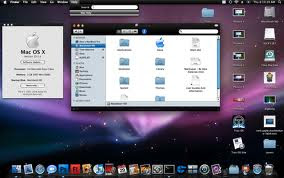
As Apple begins 2011 by opening its new Mac App Store and expanding its partnerships with Verizon, later this year the company can look forward to celebrating the tenth anniversary of three of its greatest successes: Mac OS X, the iPod, and the company's uniquely successful retail initiative.
Ten years ago, Apple was facing tremendous uncertainty as the dotcom bubble burst, killing off liberal tech spending on high end products and hitting the company's core audience of creative designers particularly hard. To make matters worse, Apple had just launched its expensive new Power Mac G4 Cube in an attempt to cater to the demand for fashionable, high end gadgets just as that market was collapsing.
The doctom era had helped Apple solidly return to profitability beginning in 1998 following the $1.8 billion in losses it reported in 1996 and 1997, but the company was now faced with reporting a new quarterly loss of $195 million in January 2001.
However, the long term execution of a series of three major new initiatives launched later that year ensured the company wouldn't have to report another quarterly loss across the next decade, even when hit by a much greater global recession that stalled growth across the industry in 2008.
Mac OS X
The first initiative was Mac OS X, Apple's new desktop operating system for Mac desktops, notebooks and servers. Mac OS X was based upon the NeXTSTEP technology it had acquired from Steve Jobs' NeXT, Inc. in the final days of 1996.
The company originally expected to quickly deploy NeXT's far superior OS, built upon a Unix foundation and offering advanced, object oriented development tools, to Mac users who currently running the ancient System 7. However, those hopes were dashed by the staunch resistance from major Mac developers including Adobe, Macromedia and Microsoft, who refused to spend the considerable resources needed to port their existing Mac apps to an entirely new system being offered by a company that, at the time, had a terrible record of delivering upon its software development roadmap and was struggling financially.
Without major modern apps, Mac hardware running NeXTSTEP would be hard to sell, given that Apple's existing customers wanted to retain their simple, familiar computing environment that could run their existing software, and the remains of NeXT's core audience had little interest in buying Apple hardware.
That forced the company to extend life support for System 7 while working to graft together NeXT's advanced technology and the valuable parts of Apple's existing software portfolio (its large Mac software library, QuickTime, and the familiar Mac user environment) into a new future product.
iPod
Apple's success with the Mac OS X platform was also tied to the release of the iPod in 2001, which dramatically turned around the public perception of the company. Ten years ago this month, Apple launched iTunes, a free software release built around Casady & Greenes' SoundJam MP music jukebox app, which Apple had acquired the previous year.
The strategy behind Apple's release of iTunes became clearer in October of that year, when the company launched the iPod, a 5 or 10GB music player capable of holding a large library of a thousand MP3s.
While hard-drive MP3 players were not new, the combination of Apple's easy to use iTunes software for cataloging and syncing music on a desktop computer, paired with the iPod's fast FireWire interface and simple operation made the new player unique, and ultimately popular. The iPod also benefitted from its use of Toshiba's new 1.8 inch hard drive mechanism, which allowed the device to be small and sleek, with enough room for a battery supporting all day use.
Competing products typically used very slow USB 1.0 or serial connections, which made music sync lengthy and clumsy. Few were bundled with easy to use software, and many expected users to navigate complex menus on the device to organize or even play their music. Few alternatives offered the thin, small package of the iPod, being based instead around larger 2.5 inch laptop drives.
Apple had quickly brought the iPod to market, using an existing reference design created by PortalPlayer based upon two ARM processors and a custom interface developed under contract by Pixo. The original iPod models offered a nod to the Macintosh with its use of the same Chicago font that had originally been the Mac's default system font.
source: appleinsider.com/

No comments:
Post a Comment